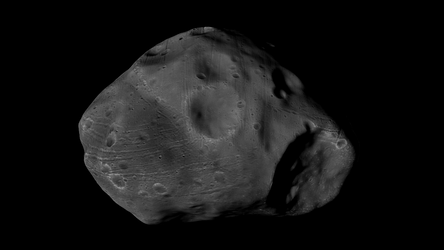Mars Express ready for comet encounter
Europe’s Mars orbiter and its scientific instruments will have a frontrow seat on Sunday when Comet Siding Spring grazes the Red Planet, skimming past at a little more than a third of the Moon’s distance from Earth.
Comet Siding Spring, discovered in January 2013, is less than a kilometre across and will pass Mars at 56 km/s, closing to within 139 500 km at 18:27 GMT (20:27 CEST) on 19 October.
Initially, the comet and its envelope of gas and dust were predicted to pass much closer to Mars, posing a serious risk to the fleet of orbiting spacecraft. Later observations confirmed that the miss distance will, in fact, be more comfortable.
ESA’s teams flying Mars Express have spent months preparing for the encounter.
“In 2013, we had very little information about the comet, which was still very far and faint. In the worst case, we expected the pass to be much closer, and the comet to be much more active,” says Spacecraft Operations Manager Michel Denis.
“We designed a special mode for Mars Express that would minimise any risk due to impacts with cometary particles.
“This included turning off all instruments and non-essential onboard systems, and turning the spacecraft so as to use the large high-gain antenna as a shield.”
Opportunity for unique science

Instead, Mars Express will operate substantially normally, and the close flyby will present an invaluable opportunity for science, including close-up observations of this enigmatic comet, the Mars atmosphere under the direct influence of the comet’s gas and dust, and the complex three-way interaction between Mars, the comet and the solar wind.
The detailed observation plans include high-resolution imaging of the comet and its structure.
“Most interestingly, we may also obtain images of cometary particles – meteors – burning up in the martian atmosphere, allowing an in-depth comparison of meteor science between Earth and Mars,” notes Håkan Svedhem, project scientist for Mars Express.
Oort Cloud object comes near
Siding Spring spent most of its life in the Oort Cloud, a shell surrounding our Sun some 5000–100 000 times the Earth–Sun distance and containing billions of comets thought to be left over from the formation of our Solar System.
“The best estimate of the maximum distance of Siding Spring is 60 000 times Earth’s distance from the Sun – almost exactly a light-year,” says Håkan.
“This makes it an extraordinary comet. It has most likely never been close to the Sun before.”
Siding Spring will be the first Oort Cloud comet to be studied up close by spacecraft, giving scientists an invaluable opportunity to learn more about the materials, including water and carbon compounds, that existed during the formation of the Solar System 4.6 billion years ago.
Despite the much reduced risk of particle impacts on Mars Express, the control team will be watching closely on Sunday evening to ensure its safety.
Updates will be posted in the Mars Express blog and a webcast from ESA’s Space Operations Centre, ESOC, in Darmstadt, Germany, will be streamed live 19 October, starting at 17:50 GMT (19:50 CEST).









